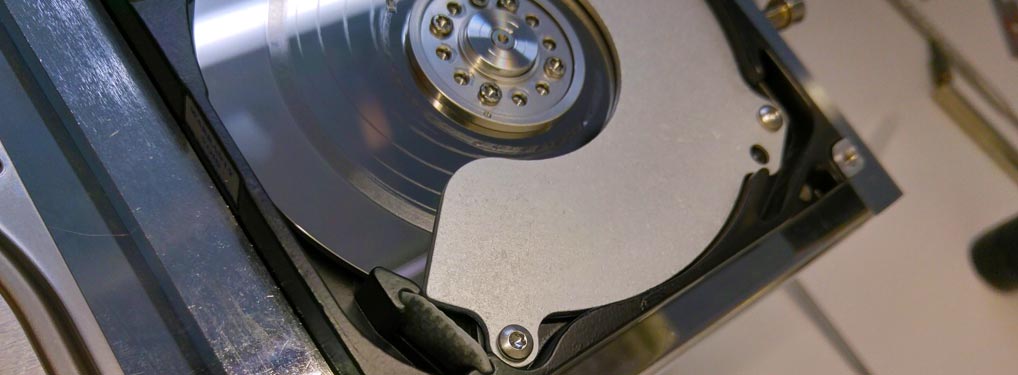“Why did my hard drive fail?” is a question we hear time and time again. While many people would like to believe they played no part in losing their data, it is not uncommon that there was some outside influence. We see a lot of disk drives that were dropped or suffered some type of impact. Can a hard drive fail on its own? Yes.

(Above: A worst-case scenario with catastrophic platter damage.)
There is some evidence that the older a hard drive is, the higher the chance it will fail. This makes sense when you consider the tolerance that a modern hard drive works at and the manufacturing materials and processes involved. If the lubricant or any other coating material starts to degrade, it will cause a snowball affect, and bad sectors will start to appear, or one or more heads may fail. In the worst cases, you end up with a catastrophic failure. There are glues, plastic, and composite materials used internally that could also contribute to disk drive failure if the manufacturing materials or process is flawed at any stage. In some cases, excessive heat or sudden power loss can contribute to bad sectors and premature failure too.
With many of the data recovery cases we see, there is evidence of user error. Some are a result of improper power connections, but the most common is impact. Here are some common causes of disk drive failure.
- Portable drive is dropped.
- Portable drive is transported unprotected in a tote, briefcase, purse, or laptop bag.
- External disk drive falls off a desk or table.
- External drive gets knocked over (it doesn’t have to fall to the floor to be damaged.)
- The wrong power adapter is connected to an external drive or caddy.
- Laptop is dropped (it doesn’t have to be powered on to damage the HDD.)
- Laptop keyboard gets banged on while hating on the internet 🙂
- Laptop is tossed across the room (laptop rage).
- Desktop tower gets kicked accidentally while spinning in a desk chair.
- Desktop tower gets knocked over.
- Desktop tower is shipped or transported without proper packing.
When a disk drive suffers an impact, especially while powered on, the heads – the internal components that read and write data on the platters – may crash into the platter surface, leaving microscopic divots and/or scratches in the platter surface material. Because of the close tolerance and precision design, this microscopic damage is like a crater. Some people think the hard disk heads ride the platter surface, but they do not. The read and write heads are a small part of a larger component called a slider. The slider has a unique design that causes it to float above the platter surface on an air bearing. When the slider hits the platter surface, it is referred to as a head crash. In some cases, the microscopic material that is scraped from the surface is large enough to cause even more damage as the drive continues to operate. The result can be complete failure at some time later than the actual time of the head crash.
Another common cause of failure is loss of power. In some cases, if a hard disk drive suddenly loses power, the head assembly might not return to the parking area. In these cases, the heads stick to the platter surface. We refer to this as stiction; the heads act like a brake and do not let the motor spin up again.
As you can see, there are many ways your hard drive can fail. It can happen to you, and the best weapon against data loss is a backup, or two, or three. If you missed your window and have suffered a failure you can get a free data recovery quote with flat-rates and free return media from Blizzard Data Recovery.